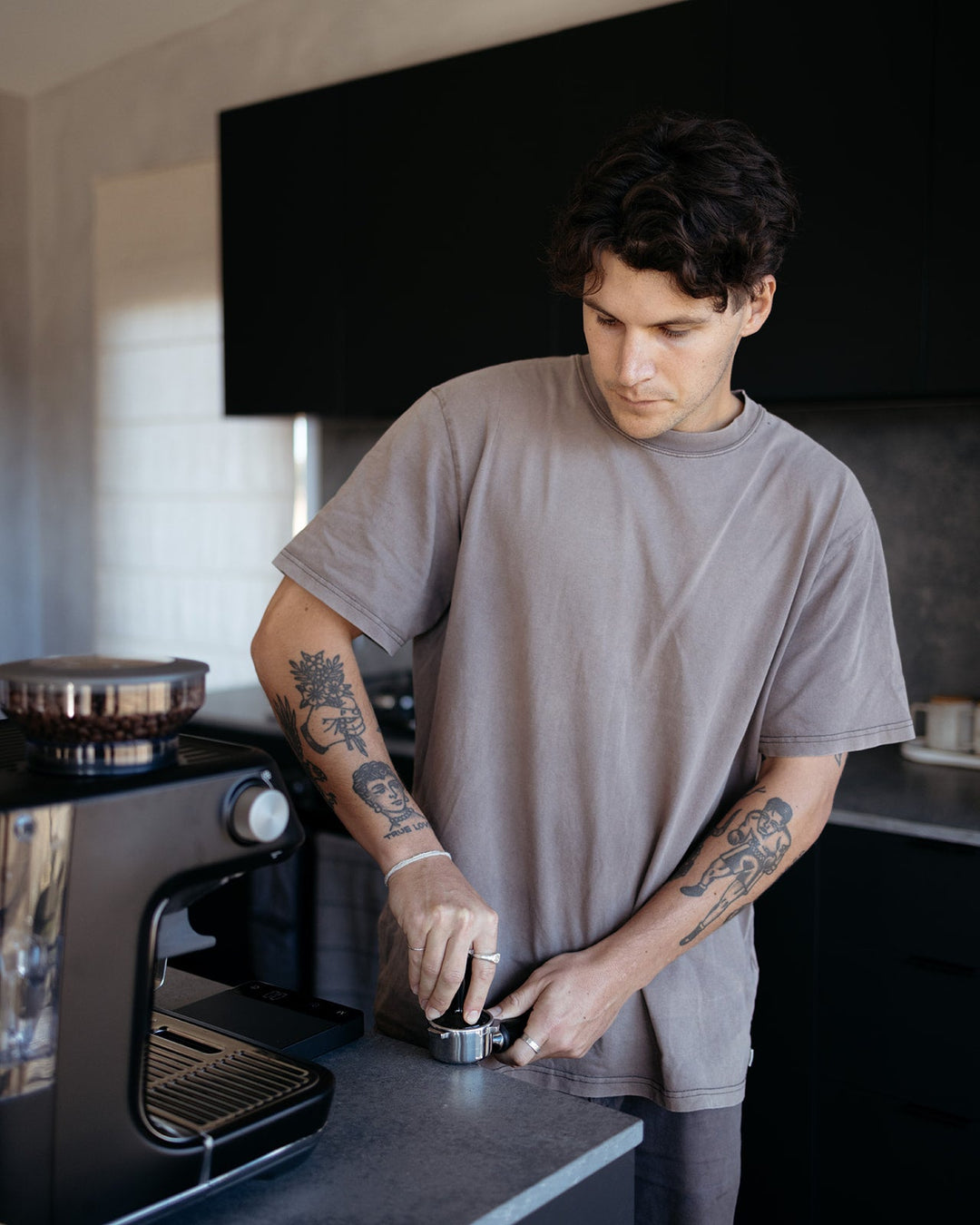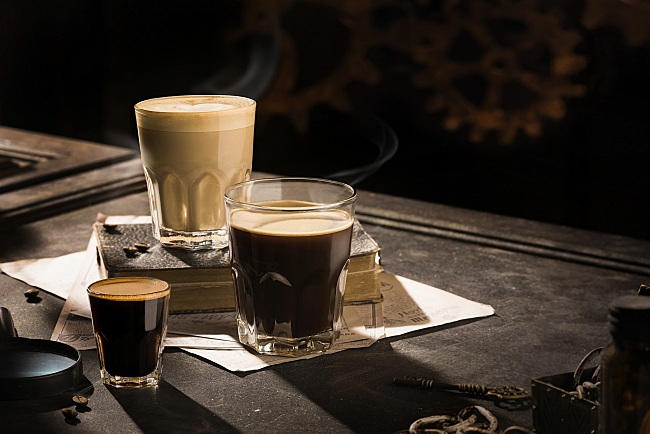Experience the Rich Flavor Profile of SOE Single Origin Espresso Today
Wiki Article
Checking Out the Rich Flavors of Coffee Beans: a Deep Dive Into Coffee and Blended Coffee Beans
When you discover the abundant flavors of coffee beans, you uncover a complex globe where each selection brings its very own character to your cup. Understanding the beginnings, refining approaches, and toasting strategies can change your coffee experience. As you browse with the art of espresso and the imagination behind blended coffees, you'll start to value the nuances that make each sip one-of-a-kind. What you'll uncover following may transform the means you appreciate your early morning brew.The Origins of Coffee Beans: Discovering Terroir and Taste Profiles
When you take a sip of coffee, you're not just appreciating a beverage; you're experiencing an abundant tapestry of tastes shaped by the beans' origins. Each region produces unique taste profiles influenced by environment, soil, and elevation. For example, beans from Ethiopia commonly rupture with bright, fruity notes, while those from Colombia often tend to use a balanced, nutty sweet taste.As you check out different beginnings, you'll see exactly how terroir-- the environmental elements affecting a crop-- plays an important role - Single Origin Espresso. The exact same coffee selection can taste dramatically various depending upon where it's grown
When you consider these variables, you begin to value the intricacy behind your cup. Each sip tells a tale of the land and the farmers that supported the beans. So, next time you indulge, assume about the journey your coffee took prior to it reached your hands, and enjoy those complex tastes that reflect its origin.
Recognizing Coffee: The Art and Science Behind the Brew
When you think regarding espresso, it's not practically the solid taste; it's likewise regarding the methods that bring it to life. Understanding how various prep work approaches effect taste can transform your brewing experience. Allow's discover the details of coffee preparation and uncover the unique taste accounts that make each cup special.Coffee Prep Work Methods
Espresso preparation is both an art and a science, incorporating specific methods with a deep understanding of coffee. To start, you'll intend to pick top quality, freshly baked beans and grind them finely for optimal extraction (Single Origin Espresso). The work dimension is important; as well rugged, and your espresso will certainly be weak, as well fine, and it'll be bitterThe outcome should be an abundant, velvety espresso with an attractive layer of crema on top. With technique, you'll grasp these techniques.
Taste Profiles Discussed
The globe of coffee supplies a rich tapestry of flavor profiles that can raise your coffee experience. Light roasts often showcase brilliant level of acidity and vivid flavors, while dark roasts present much deeper, bolder tones.Understanding these profiles helps you select the ideal coffee for your taste. Trying out various blends can reveal unexpected combinations. For instance, a well-crafted mix could harmonize the bright notes of an Ethiopian bean with the rich, chocolatey undertones of a Brazilian bean. Embrace the journey of uncovering espresso's diverse flavors, and you'll transform your coffee ritual right into an interesting experience.
Processing Approaches: Just How They Impact Flavor and Aroma
While it could appear that the origin of coffee beans is the most substantial consider identifying their flavor and scent, the processing approaches utilized post-harvest play an equally vital role. You'll find that these approaches can substantially modify the final taste account of your cup.As an example, the washed procedure eliminates the fruit from the beans before fermentation, usually bring about a cleaner, brighter taste. At the same time, the all-natural procedure leaves the fruit undamaged during drying out, causing a sweeter, fruitier profile.
Various other methods, like honey handling, strike an equilibrium, enabling some fruit mucilage to remain, giving an one-of-a-kind complexity.
Each handling technique engages with the beans' inherent attributes, enhancing or silencing specific flavors and fragrances. So, when you sip that espresso or combined coffee, remember that the journey from cherry to mug is affected not just by beginning yet also by just how those beans were processed.
Toasting Techniques: Opening the Complete Potential of Coffee Beans
Roasting strategies are vital for disclosing the full capacity of coffee beans, as they change raw, green beans into the fragrant, savory coffee you enjoy. The option of toasting approach-- light, tool, or dark-- drastically affects taste accounts. Light roasts preserve the beans' natural acidity and fruity notes, while medium roasts equilibrium sweet taste and splendor. Dark roasts, on the other hand, emphasize strong, great smoky tastes.A slower roast at reduced temperature levels permits for complicated flavors to develop, while a quicker roast can magnify bitterness. By understanding these strategies, you'll expose a world of taste, boosting your coffee experience to brand-new elevations.
The Magic of Blended Coffee: Developing One-of-a-kind Flavor Experiences
Creating an unique taste experience with mixed coffee can transform your early morning ritual right into an exploration of preference. Single Origin Espresso By integrating different beans from various areas, you can reveal a symphony of tastes that elevate your mug to new heights. Each mix deals a distinct account, stabilizing body, acidity, and sweetness to produce something truly special.When you pick a blend, you're not simply selecting a coffee; you're choosing a trip across diverse landscapes and societies. Experimenting with various mixes allows you to uncover your personal favorites, whether you appreciate fruity notes or rich, chocolatey touches.

Sampling Notes: Recognizing the Subtleties in Your Mug
As you sip your coffee, you could notice a spectrum of tastes dancing on your palate, each exposing the details of the beans. You may taste the brilliant level of acidity evocative citrus or the deep, rich notes akin to dark delicious chocolate. The sweet taste could stimulate honey or caramel, balancing the general account wonderfully.Focus on the body of the coffee-- does it really feel airy and light, or is it complete and luscious? The surface, also, offers clues; a remaining aftertaste might mean nuttiness or flower undertones.

Don't forget to check out the distinct qualities of different origins, as each area gives unique tastes - Single Origin Espresso. As an example, Ethiopian coffees typically present fruity notes, while Colombian beans could display a much more rounded sweet taste. By recognizing these nuances, you'll deepen your admiration for each and every mug, raising your coffee experience to new elevations

Brewing Methods: Optimizing Flavor Extraction for Every Bean
When you discover the numerous brewing methods, you'll discover that each strategy can dramatically influence the flavor profile of your coffee. From French press to pour-over, each approach essences different compounds, improving or muting particular notes. Using a French press permits oils to stay in the mixture, producing a richer taste, while pour-over stresses clarity and illumination.Temperature and grind dimension likewise play important duties. A coarser grind functions best for chilly brews, while a great work is suitable for espresso. Trying out with water temperature-- between 195 ° F and 205 ° F-- can disclose concealed flavors, also.
Don't forget steeping time; a quick extraction can result in sour notes, while over-extraction may yield resentment. By readjusting these variables, you can maximize flavor removal and absolutely elevate your coffee experience. Take pleasure in the trip of discovering what technique finest matches your palate!
Often Asked Inquiries
What Is the Perfect Water Temperature for Developing Coffee?
The ideal water temperature for developing coffee's between 195 ° F and 205 ° F. If you utilize water that's also warm, you'll over-extract flavors; as well cool, and you will not extract enough. Go for that sweet area for the best mixture!How Does Work Dimension Affect Coffee Flavor?
Grind size significantly influences coffee taste. Better grinds extract much more oils and flavors, leading to a bolder preference, while coarser grinds return a lighter taste. Readjusting work size helps you accomplish your preferred coffee account.Exist Wellness Benefits Surrounding Drinking Coffee?

What Is the Difference Between Arabica and Robusta Beans?
Arabica beans are smoother and sweeter, usually featuring fruity tastes, while robusta beans are more powerful with a bitter preference and higher high levels of caffeine web content. You'll notice these differences in fragrance and developing experience.How Can I Store Coffee Beans for Quality?
To store coffee beans for freshness, keep them in an impermeable container, far from warm, wetness, and light. If you only grind what you require right before brewing., you'll keep their taste much longer.Exploring the Rich Flavors of Coffee Beans: a Deep Dive Into Coffee and Blended Coffee Beans.
When you discover the abundant tastes of coffee beans, you uncover a complex globe where each selection brings its very own character to your cup.When you take a sip of coffee, you're not simply enjoying a drink; you're experiencing a rich tapestry of flavors formed by the beans' beginnings.Roasting methods are vital for revealing the complete capacity of coffee beans, as they change raw, environment-friendly beans into the fragrant, savory coffee you delight in.As you drink your coffee, you could observe a spectrum of flavors dancing on your taste, each exposing the ins and outs of the beans.
Report this wiki page